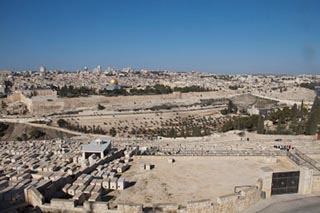15:1–63 Discussion of Judah’s inheritance began in Josh 14:6. Judah emerged as the most important tribe, having received a special blessing from his father, Jacob, many years prior while the nation of Israel was still in Egypt (Gen 49:8–12). This blessing associated Judah with rulership (see Gen 49:10). Judah’s inheritance (Josh 15:1–12) is geographically the largest of the tribes in Canaan proper. |
15:3 passes along to Zin Judah’s inheritance extended southward to the border of Edom.
south of Kadesh Barnea See Num 32:8; 34:4; Deut 1:2, 19.
15:4 by the wadi of Egypt Refers to the Wadi el-Arish, not the Nile. This wadi flows from the northern Sinai Peninsula into the Mediterranean Sea.
15:5 the Salt Sea The Dead Sea was also called the Salt Sea.
15:6 to Beth-hoglah Possibly located at Ain-Hajlah, which still bears resemblance to this name.
Beth Arabah Possibly identified with Khirbet Qumran, the site associated with the Dead Sea Scrolls.
the stone of Bohan The identification of this site is uncertain. “Bohan” may derive from the Hebrew word for “thumb” (bohen), suggesting the name may derive from the shape of a rock formation. Compare Josh 18:17.
15:7 to Debir See 10:3, 38–39; 11:21.
the valley of Achor Where Achan and his family were stoned (see 7:24–26).
Gilgal See 5:9–10.
the waters of En Shemesh Possibly identified with Ain el-Hod (“spring of the Apostles”) or Ain er-Rawabi.
En Rogel Likely identified with Bir Ayyub (“Job’s Well”) in the Wadi Kidron, which flows into the valley of the Son of Hinnom.
15:8 the Valley of Ben Hinnom The Hebrew text sometimes refers to this valley as gei ben hinnom (“Valley of the Son of Hinnom”) and other times just as gei hinnom (“Valley of Hinnom”). The latter rendering became “Gehenna” in Greek (Matt 23:33). The valley encircles the Old City of Jerusalem on the south and west. See note on Jer 7:31.
in Greek (Matt 23:33). The valley encircles the Old City of Jerusalem on the south and west. See note on Jer 7:31.
the valley of Rephaim Identified with the Wadi el-Ward, west of Jerusalem. See Josh 12:4; 13:12.
15:9 Kiriath Jearim See 9:17; 15:60.
15:10 Mount Seir Not the Mount Seir in Edom, since the other geographical locations mentioned in this verse are in the western region of Judah. This is the only reference to a Mount Seir in the western hills of Judah, but one of the Amarna letters (number EA 288) may refer to a Seir near Jerusalem.
Mount Jearim Identified as Kesla, located roughly 10 miles west of Jerusalem.
Beth Shemesh Modern-day Tell er-Rumeileh.
15:11 Ekron One of the Philistine cites on the Mediterranean coast (13:3).
15:13 Caleb son of Jephunneh See 14:6–15.
15:14 Sheshai, Ahiman, and Talmai These three Anakites—who are part of a clan of giant people—were alive 40 years earlier when Caleb spied out the land (compare note on 14:15).
15:15–19 These verses describe sites in the hill country south of Hebron. |
15:15 the inhabitants of Debir Caleb gets credit for attacking Debir; however, v. 17 indicates that Debir was captured by Othniel, Caleb’s kinsman. In 10:36–39, the capture of Debir is credited to Joshua.
15:17 he gave to him Acsah his daughter as a wife Othniel was Caleb’s nephew and a member of the Kenizzite clan. Consequently, the marriage remained within the clan.
15:20–63 These verses delineate the territory of Judah by listing 60 cities belonging to Judah according to geographical region. The list closes with the note that Jerusalem, the city of the Jebusites, remained under Canaanite control (v. 63). |
15:63 the Jebusites Jebus, the city of the Jebusites, is identified with Jerusalem (see 18:28; Judg 19:10–11). Judges supports this comment about Israel’s failure to drive out the Jebusites (Judg 1:21), but the failure is attributed to the tribe of Benjamin.

|
About Faithlife Study BibleFaithlife Study Bible (FSB) is your guide to the ancient world of the Old and New Testaments, with study notes and articles that draw from a wide range of academic research. FSB helps you learn how to think about interpretation methods and issues so that you can gain a deeper understanding of the text. |
| Copyright |
Copyright 2012 Logos Bible Software. |
| Support Info | fsb |
 Loading…
Loading…


